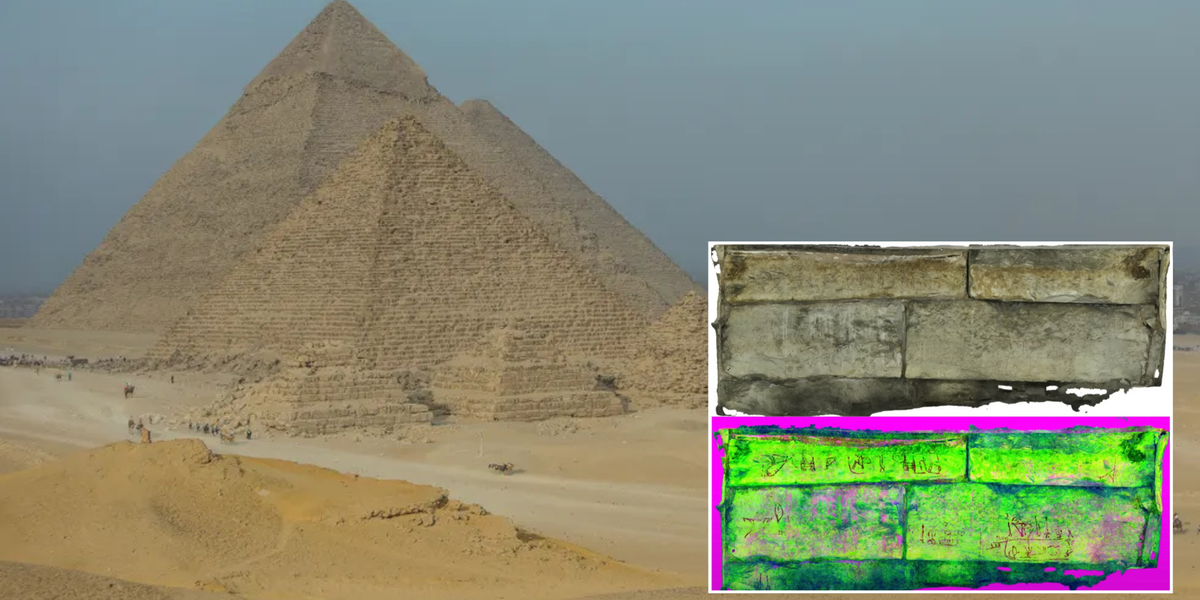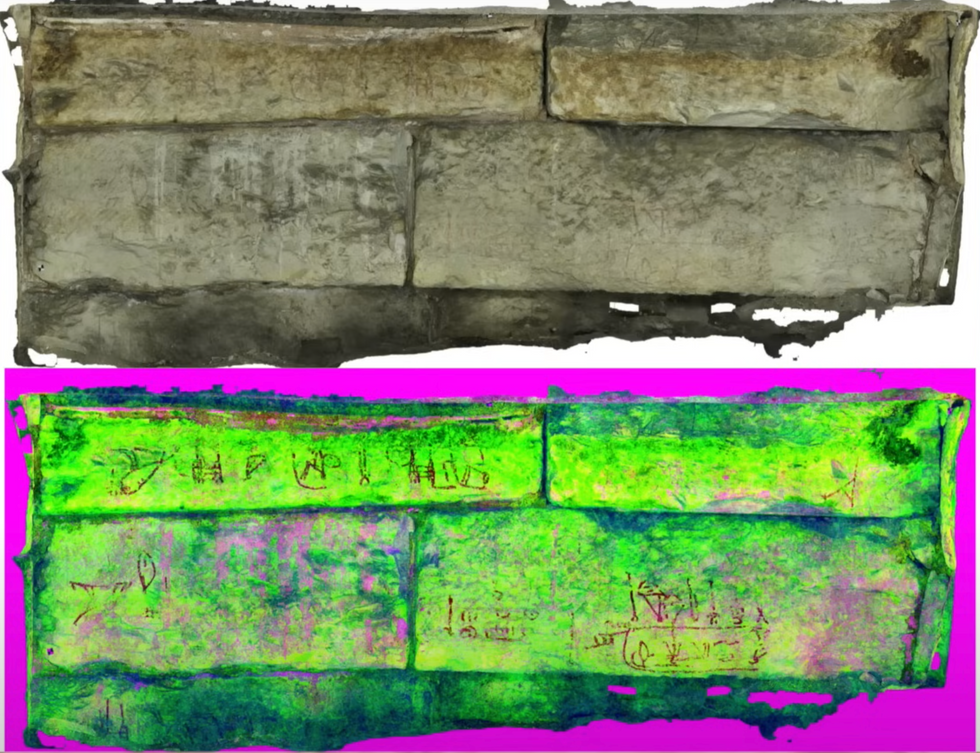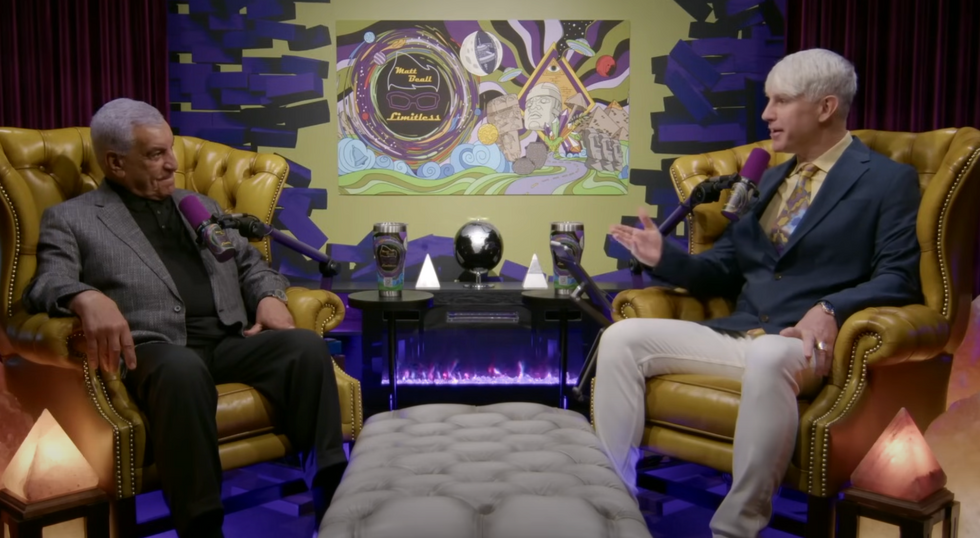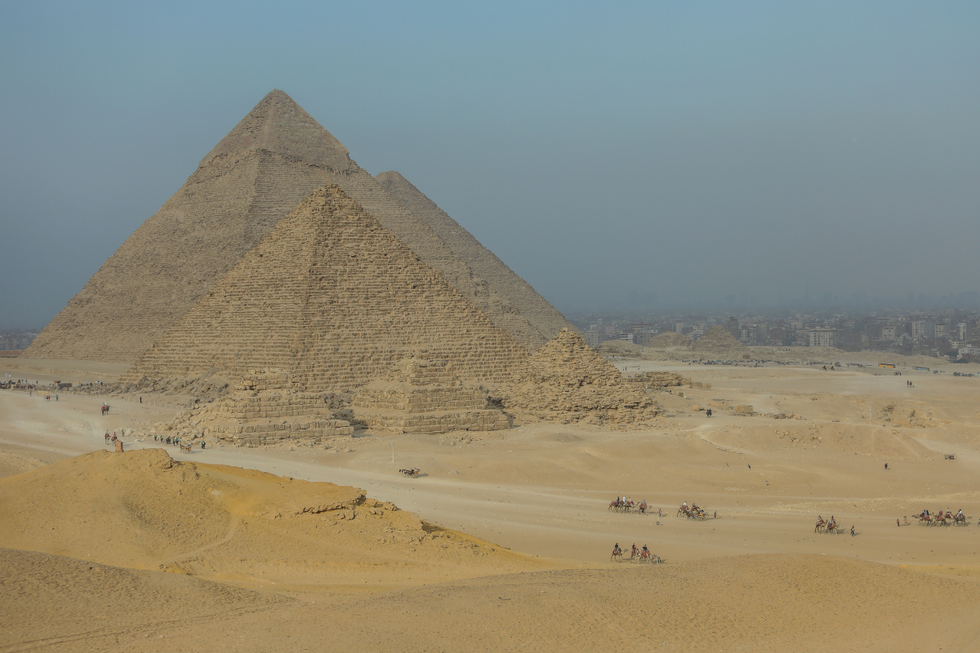



Archeologists have discovered ancient inscriptions and tombs which suggest who may be responsible for building Egypt's Great Pyramid.
Many people believed that slavery was involved in building the pyramid around 4,500 years ago.
However, a recent expedition by a team of archeologists including Egyptologist Dr Zahi Hawass has concluded it was not the work of slaves but instead of paid workmen.
Using 3D technology, Dr Hawass and his team found graffiti from workmen-gangs who they believe built the pyramids.
"With new technology you can actually see every small graffiti clear and we had an expedition recently working inside the five chambers recording every piece or small letter written and left by the gangs who built the pyramids," Dr Hawass said during an appearance on the Matt Beall Limitless podcast.
He added that there was "no way" the graffiti could be forgery, saying he was sure it had been left by ancient Egyptians.
Dr Hawass also confirmed the team found tombs of the pyramid builders which helped them reach the conclusion that these were not slaves and instead were workers.
He told Matt Beall: "The tombs can prove two important facts - the first fact is based on the names we found in the upper cemetery that the workmen who built the pyramids were Egyptians and the second were they were not slaves.

New inscriptions have been discovered in the Great Pyramid by archaeologists
Matt Beall Limitless
"If they were slaves they would never be buried in the shadow of the pyramids, if they were slaves they would never prepare the tombs for eternity by Kings and Queens."
Dr Hawass explained that his colleague Mark Liner discovered an area east of the pyramid which he described as a "city for the workman" and said even featured a bakery for making bread.
The Egyptologist said his team also found "thousands" of animal bones at the pyramid, going against many people's theories that those who built it ate bread, garlic and onion.
The bones were analysed by an expert who discovered they equated to ariund 11 cows and 13 goats - enough to feed 10,000 workman every day.

Dr Zahi Hawass speaking with Matt Beall on the Matt Beall Limitless podcast
Matt Beall Limitless
When asked about how the ancient pyramids were built, Dr Hawass revealed on the Matt Beall Limitless podcast: "The workmen would come, some would cut the stones, shape the stones and some would transport the stones on wooden sledges to the base of the pyramid."
He explained the stones were then moved with the help of a ramp constructed of rubble and mud.
Podcast host and American retail boss Matt Beall, revealed during the conversation that he would be helping to fund an exploration of the 'Big Void' in the Great Pyramid, which would involve using a small robot.
The 'Big Void', discovered in 2017, is a space above the Grand Gallery in the pyramid which Dr Hawass said is around the size of two trucks.

The Great Pyramid
GETTYBeall said the robot would measure around six millimetres wide and be sent up to the space to see what is inside.
The 'Big Void' exploration project is expected to begin in around January next year.
